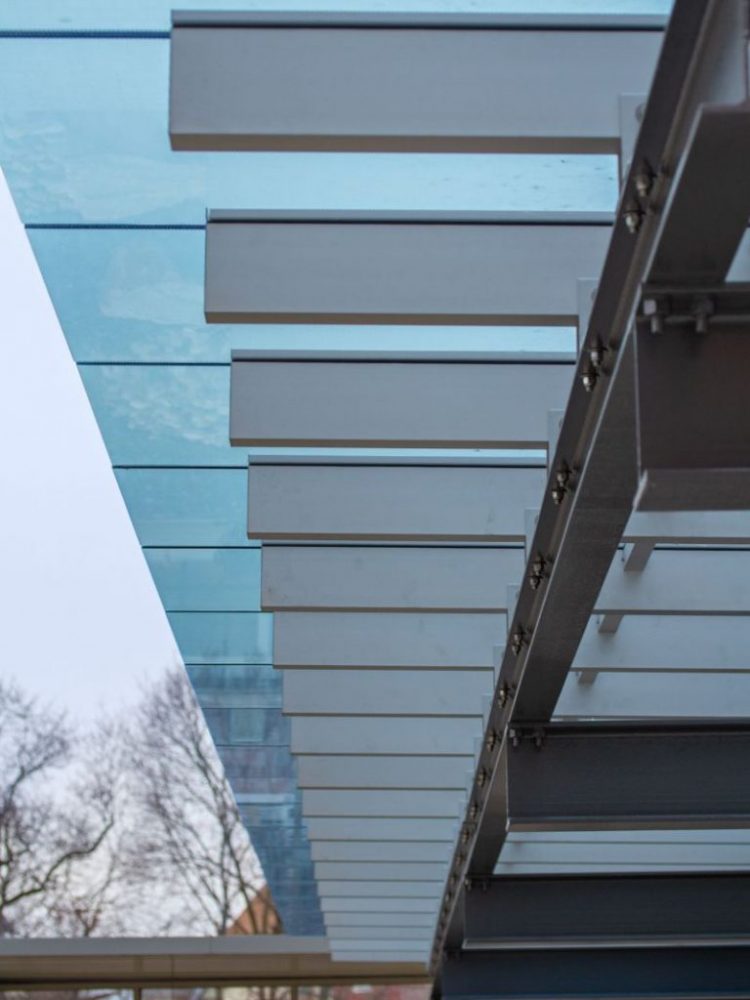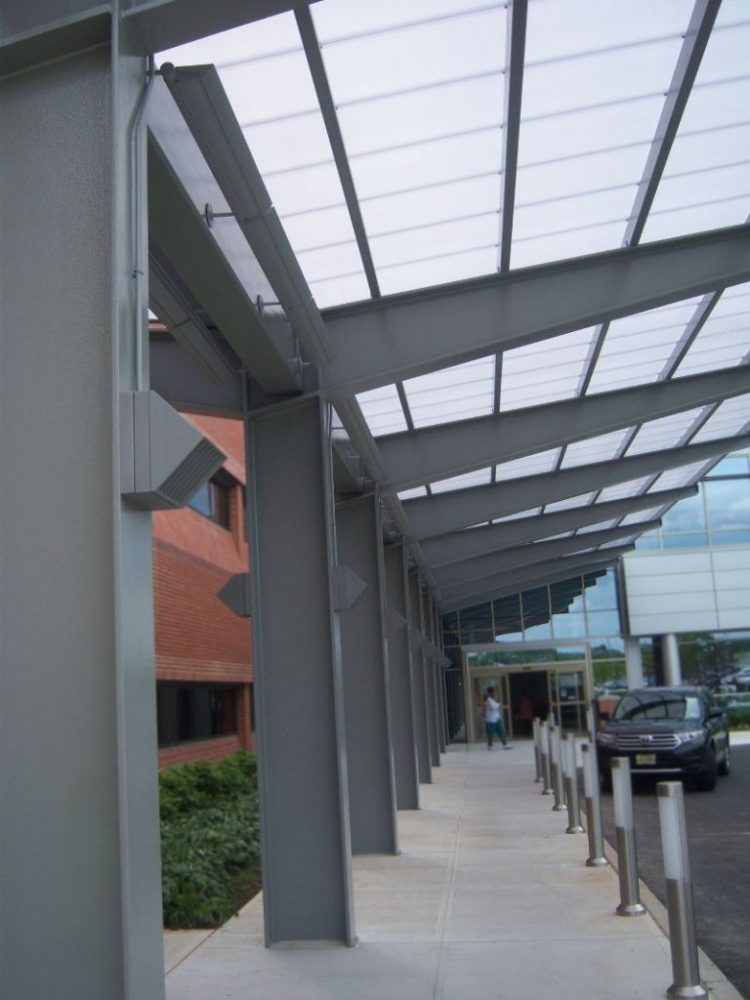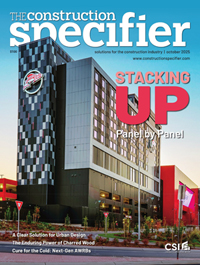Why Architects and Building Owners Choose Glass & Polycarbonate Canopies
Glass and polycarbonate canopy systems provide sleek, weather-protected spaces while adding modern flair. Contrary to typical metal canopies and awnings, which fully block out sun, glass and polycarbonate canopies embrace the light, diffusing the rays and allowing them to shine through.
Glass canopies are highly customizable, with tints, patterns, and coating options available. They provide a clean-lined appearance to a space, enhancing curb appeal. They also allow sunlight and moonlight to shine through, reducing the need for artificial light.
A high-performance glass canopy integrates engineering and aesthetics. Factors like load requirements, thermal movement, attachment details, drainage, and material compatibility all impact performance. That’s why partnering with a manufacturer experienced in high-performance canopy systems is key.
Translucent canopies, often made from cellular or monolithic polycarbonate panels, offer many benefits including light diffusion, UV-resistance, and design-flexibility. Polycarbonate canopies can be cold formed for curved designs. Additionally, polycarbonate panels are extremely lightweight and easy to install.
Like glass canopies, translucent canopies require water control and proper gasketing for the selected material. The framing system should be designed to accommodate the proper grazing panels.
By partnering with an experienced manufacturer, building owners and architects can create captivating, budget-friendly designs that withstand the elements and serve as a functional space
All information listed in this section was submitted by Extech/Exterior Technologies, Inc..
Kenilworth Media Inc. cannot assume responsibility for errors of relevance,
fact or omission. The publisher does not endorse any products featured in this article.




